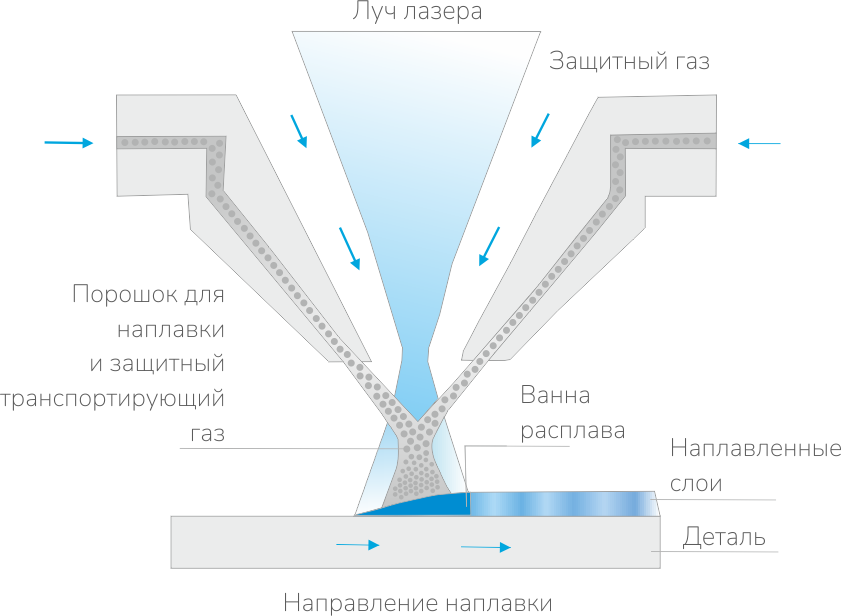Laser cladding (LC)

Purpose:
-
repair of metal parts worn or damaged geometry;
-
repair parts of complex geometry;
-
growing volumetric metal parts or their worn damaged parts.
Advantages:
-
completely fusing the filler material to the substrate due to the formation of a metal bond;
-
surfacing without thickness limitation;
-
localization of exposure;
-
feature - absorption of laser radiation by the processed material ensures minimal thermal effects and allows to preserve geometric dimensions and practical absence of deformation of the deposited parts;
-
possibility of fibre delivery of laser radiation makes it possible to eliminate defects in hard-to-reach places and to process large-sized parts without dismantling;
-
coatings obtained by laser cladding have great functionality - high wear resistance, heat resistance, shock resistance, and so on, depending on the coating material.
Application:
- drilling and geological exploration;
- mechanical engineering;
- oil and gas;
- chemistry and recycling;
- metallurgy;
- energy;
